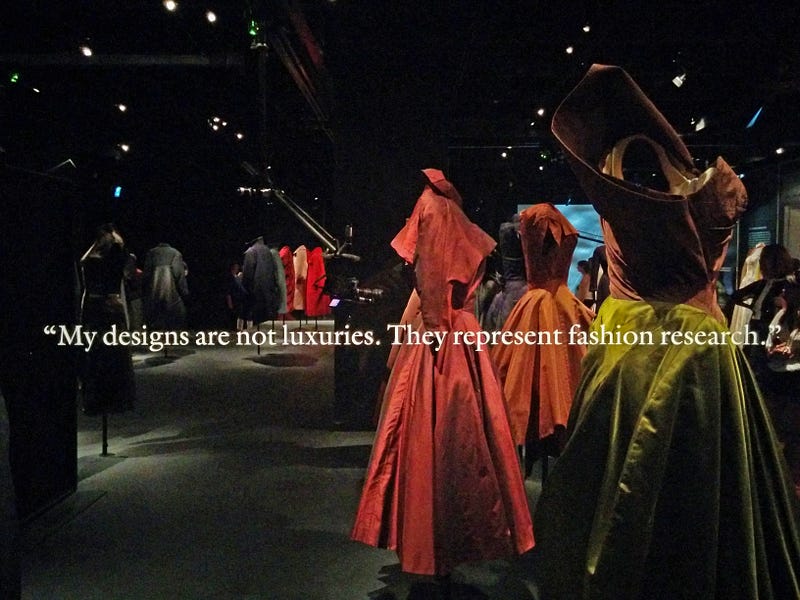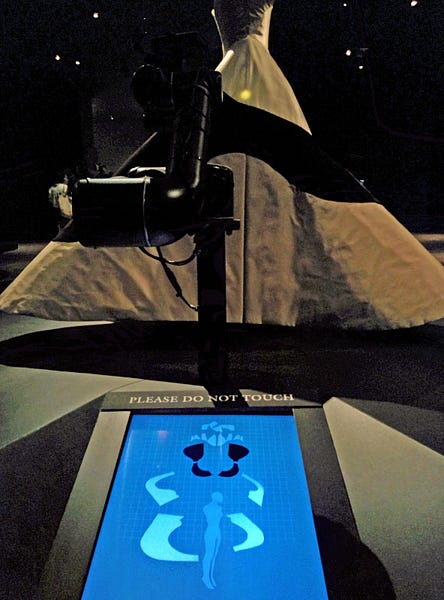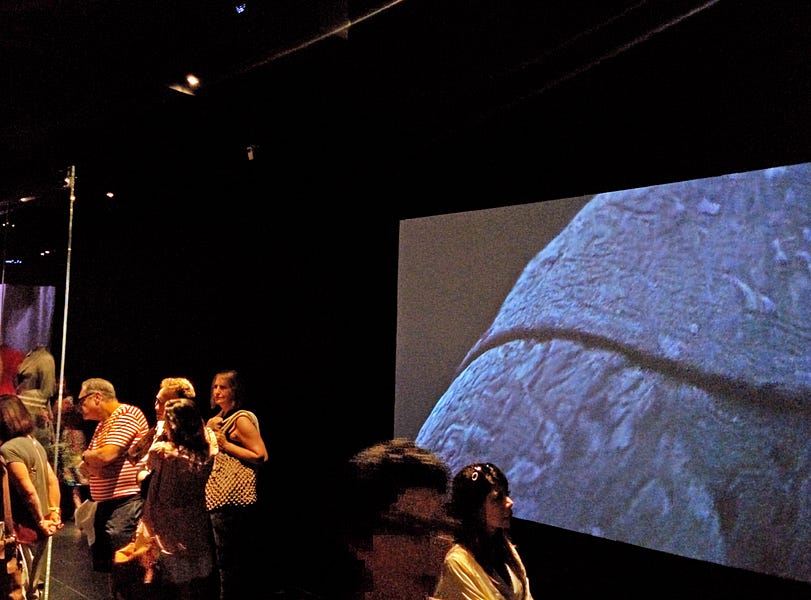
Mar '12 - Apr '15

Architects have had a long history of idolizing fashion – it’s fabrics, geometries, material performance – and the Charles James exhibition at the Met portrays the fashion designers work in a way that all but forces you to hold the work in equally high regard. Perhaps a little late to the game, I finally got around to seeing the work of the fashion designer who infamously obsessed over his methodology toward the end of his career. It was great to see the dresses in person - far more spatial, tectonic, and architectural than I imagined. The exhibition, designed by Diller Scofidio + Renfro, goes to great lengths to augment the exhibition’s pieces through various technological means. With screens tilting up from pedestals, robotic arms rotating, and blown-out projections shooting towards walls and dresses, the exhibition is certainly tech-heavy without overshadowing the amazing work of Charles James.
The Robotic Arm

In the first floor gallery space, each dress hovers over an elliptical pedestal, with an angled screen and robotic arm attached to the base. As the display’s imagery transitions from verbal description to visual diagram, the robotic arm (with mini-projector attached) moves around the dress, creating a bridge between the material specimen and digital media. The tactic is very much a continuation of DS+R’s motivations as an architectural office driven by the relationships between man, space, and technology.
The effect of the projection/digital display connection, although engaging, has its limitations. The dim space and under-lit dresses make the projected objects difficult to decipher. Despite the bumpy relationship between projections and their fabric canvasses, the diagrams and sequences of each dress’s construction are stunning. With perhaps every other dress I moved toward, a comment along the lines of “wow, that’s amazing,” was uttered. Surely, the comments were directed at the fashion artifacts, however, the appreciation for each specimen’s construction are instilled through the displays progression of simplified diagrams. You can easily imagine Charles James working with the same operations and methods, had he access to Illustrator of AfterEffects.
The Basement

The other half of the exhibition, located in the museum’s basement, offers a delightful corollary to the solemnity of the main room. The space consists of one continuous platform in the room’s center, with ever dress hovering over the black surface. The use of the robotic arms here is nothing short of awesome. Rather than attempt to augment the digital screen with, (some would say) gimmicky geographic signifiers as in the first room, the robotic arms here are affixed with cameras instead of projectors. At first, you can see visitors trying (to no avail) to identify the relationship between the camera and the display at their feet. Meanwhile, several walls along the room’s edges display a sort of dynamic wallpaper. The subtle textural and tonal shifts seem abstract at first, but the visitor comes to the eventual realization they are viewing the dresses through the acute lens of the dancing camera. The most impressive aspect of the projection’s communication is its ambiguity, maintained until after the visitor has, with good reason, focused solely on the physical dresses on display. The scale of the walls’ projections further add to the disorientation, while the content – slow, drone-like hovering above the dress topography – add a layer of perception not otherwise possible in the dimly lit space. Visitors actively putting the puzzle-pieces of the space together, and expressing joy as a result, is immensely rewarding to see. It’s like the exhibition makes up for the history of architecture as a collection of details and sensibilities that most bystanders never notice!
DS+R’s persistence in seeking new relationships between humans and technology is on display as much as Charles James’ work, giving visitors an immersive look his most whimsical, dynamic, and awe-inspiring pieces.
Charles James: Beyond Fashion is on display until August 10, 2014.
Now that I'm post-graduate-school, and [for the time being] post-architectural-practice, I'm using this blog as an outlet to generate meaningful conversation on the limitations as well as latent opportunities in architectural practice. Co-Founder @anewyorkagency



No Comments
Block this user
Are you sure you want to block this user and hide all related comments throughout the site?
Archinect
This is your first comment on Archinect. Your comment will be visible once approved.